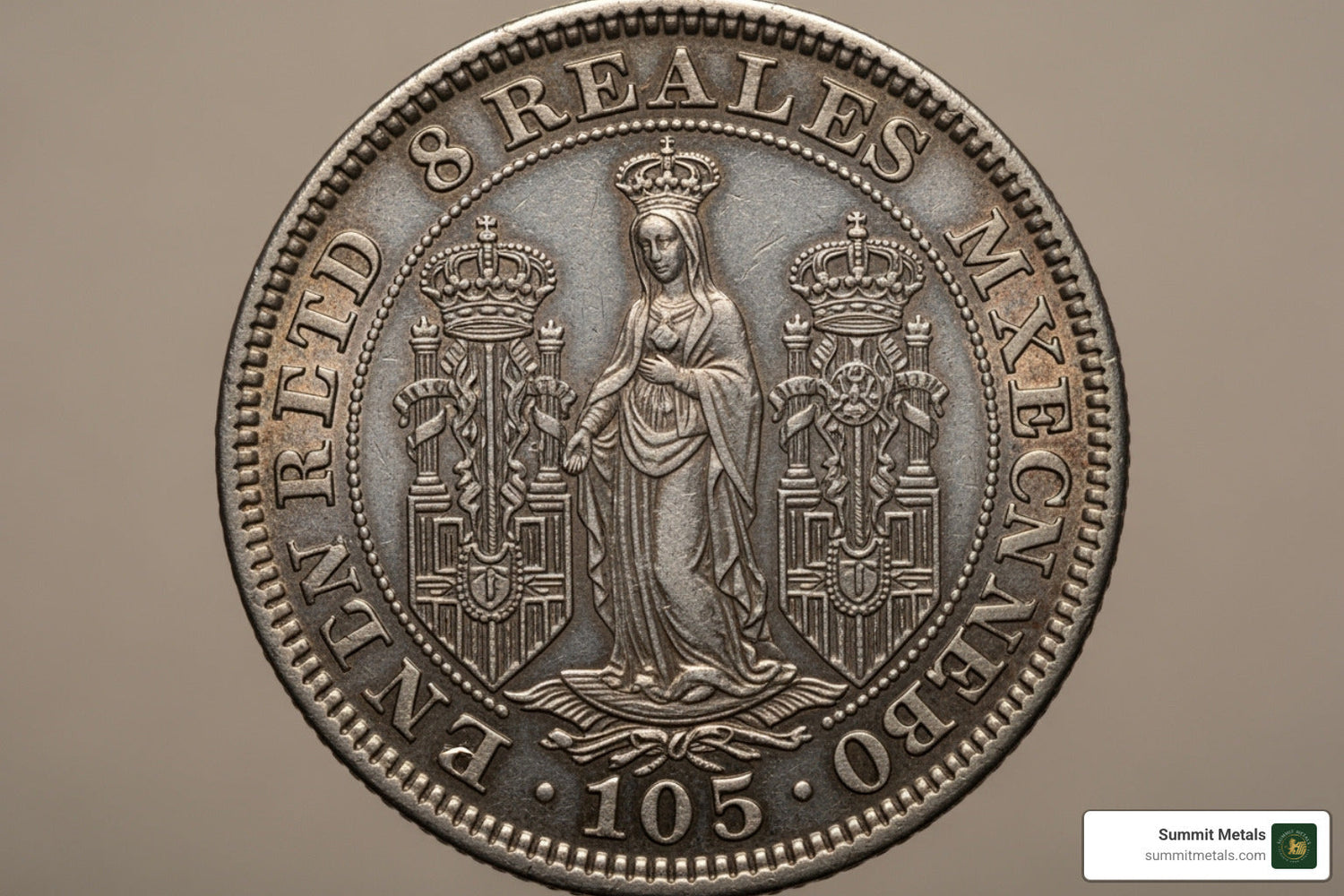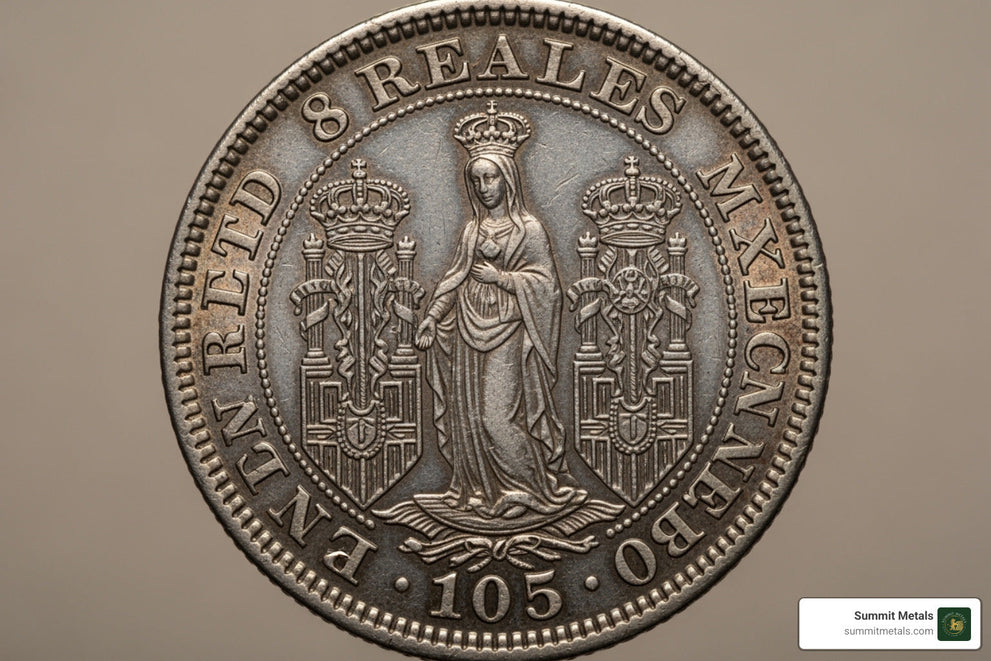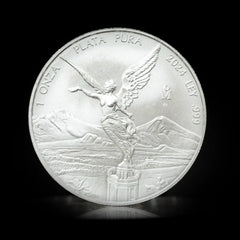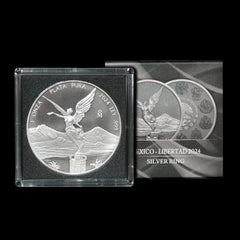The Mexican Silver Dollar: A Global Currency That Shaped World Finance
The mexican silver dollar most commonly refers to the historic 8 Reales coin—better known internationally as the Spanish dollar—that became the world's first truly global currency. Here's what you need to know:
Key Facts:
- Official name: 8 Reales (also called "pieces of eight")
- Silver content: 24.4 grams of pure silver (.903 fine)
- Years minted: 1824-1897 in independent Mexico
- Global impact: Legal tender in the US until 1857, influenced the modern dollar symbol ($)
- Modern equivalent: Mexican Silver Libertad (introduced 1982)
The story of the mexican silver dollar begins in the silver mines of colonial Mexico, where Spanish colonial authorities created what would become the world's most trusted currency. These coins didn't just circulate in Mexico—they became the backbone of international trade from Shanghai to New York.
After Mexican independence in 1821, the new nation continued minting these silver coins, maintaining the same weight and purity standards that made them globally accepted. The 8 Reales coin contained 27.07 grams of .903 fine silver, making it both a medium of exchange and a store of value.
The mexican silver dollar's influence extended far beyond Mexico's borders. It served as legal tender throughout North America until the mid-1850s and directly influenced the creation of the US dollar. Even today, the legacy lives on in modern Mexican Silver Libertads, which are among the world's most popular bullion coins.
As Eric Roach, I've guided clients through decades of precious metals investing, including historic Mexican silver coins that offer both numismatic value and silver content. Understanding the mexican silver dollar's history helps investors appreciate why these coins remain valuable assets in modern portfolios.
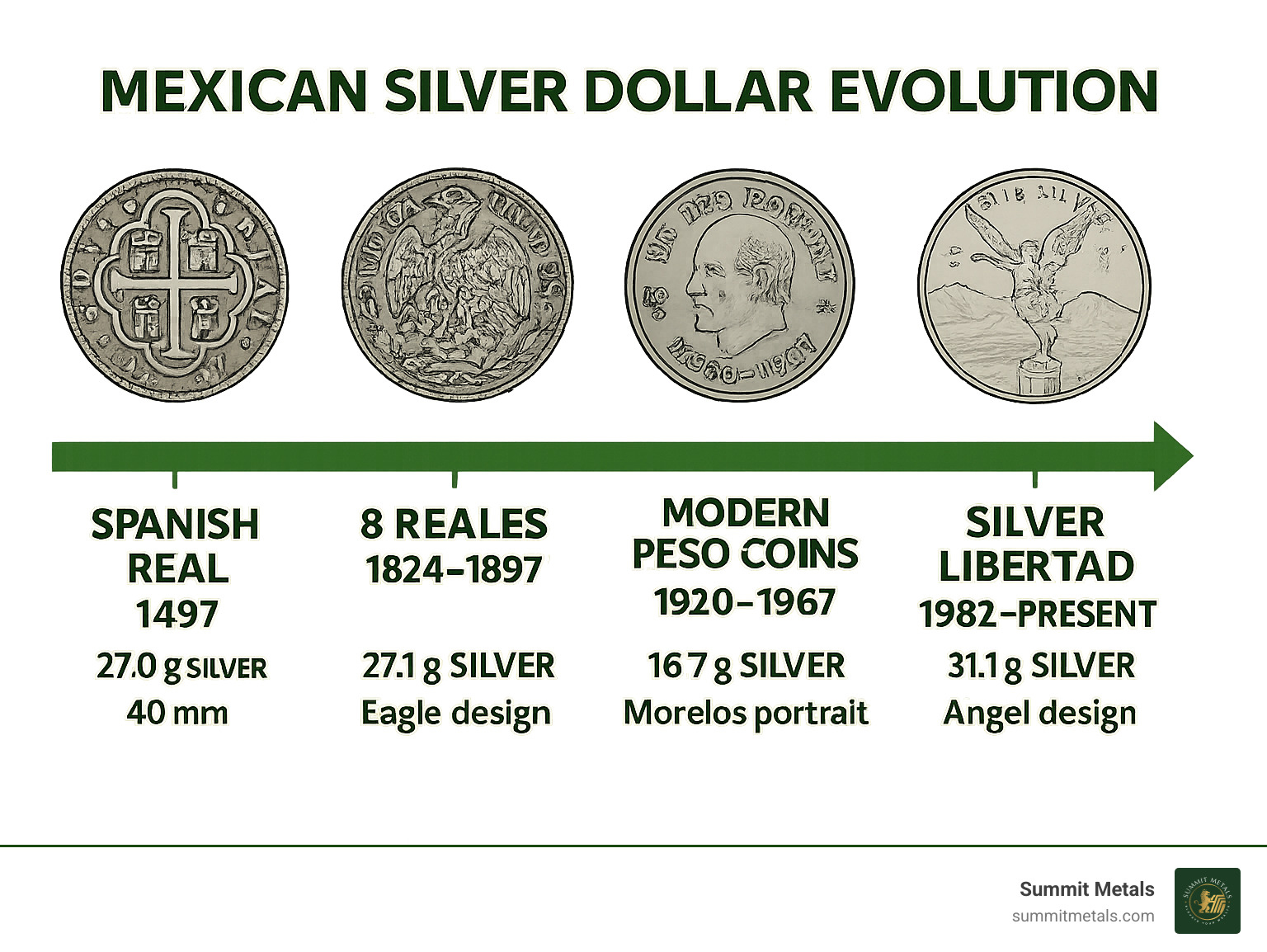
The Birth of a Global Currency: From Spanish Real to Mexican Peso
Our trip into the story of the mexican silver dollar truly begins with a treasure hunt – the one that led Spanish explorers to find vast silver deposits in the New World. Imagine the excitement as they unearthed seemingly endless veins of silver in places that would become Mexico, particularly the famous Zacatecas and Guanajuato mines. This incredible wealth wasn't just a boon for Spain; it laid the groundwork for the world's first truly global currency.
To manage this silver bounty and make trade easier, the Spanish Crown did something groundbreaking: they established La Casa de Moneda de México, the Mexican Mint, in 1535. This wasn't just any mint; it was the very first in all of the Americas! Its creation marked a huge step forward in global finance. As early as 1536, the Mexico City mint started churning out silver coins, even before a major coinage reform a year later. These coins, and the ones that followed, would soon be known far and wide as the Real de a Ocho, or "Piece of Eight."

The Spanish Dollar: The World's First Reserve Currency
The Spanish dollar's rise to become the world's first reserve currency wasn't by chance. It was carefully designed for trust. Minted from 1497, these coins had a consistent weight and purity – about 25.563 grams of fine silver. This uniformity, along with careful milling (the edges that prevent shaving off silver), made them incredibly reliable.
By the 16th century, the Spanish dollar had become the backbone of international trade. Picture ships laden with these coins, crisscrossing global trade routes, famously carried across the Pacific by the Manila-Acapulco Galleons. This commitment to a solid silver standard was the very foundation of international commerce for hundreds of years. The Spanish eight reales coin was set at a specific weight of 27.47 grams of .9305 fine silver. This remarkable consistency meant its value barely changed over 250 years – a true testament to its quality!
Fun fact: Coins minted in the New World were often made a bit heavier than those in Spain. Why? Because of the "Quinto" (King's Fifth) tax, a 20% levy on all colonial silver and gold. By making the coins 20% heavier, the King's tax was automatically collected when the silver reached Spain. Clever, right?
This dependable silver also poured into the English colonies in North America, becoming the main way people bought and sold things. In fact, Spanish money made up about half of all the coins in colonial America! The Spanish dollar was even made legal tender in the United States on February 9, 1793, and remained so until February 21, 1857. Its influence was so deep that common American phrases like "two bits" (from cutting a Piece of Eight into eight parts) and "pieces of eight" come directly from these Spanish coins. Even today, the New York Stock Exchange's old way of listing prices in eighths shows how much the Spanish milled dollar impacted finance.
The Transition to the Mexican Peso
When Mexico finally won its independence in 1821 after a long and hard-fought war, the new nation faced a big challenge: how to build its own identity while keeping the economy stable. Mexico wisely understood the immense global trust already placed in its silver coinage. So, the independent Mexican government made a smart move. They continued to mint the 8 Reales coin, sticking to the exact same strict standards of weight and purity that had made it so successful under Spanish rule.
These post-independence 8 Reales coins typically contained 27.07 grams of 0.903 fine silver. This consistency was crucial. It ensured that the mexican silver dollar kept its excellent reputation and remained a highly sought-after currency in international trade. For many decades after independence, the Mexican Peso (which the 8 Reales effectively was) served as the official money for all of North America until the mid-1850s. This smooth changeover firmly cemented the coin's place in history, showing the powerful and lasting trust that its intrinsic silver value commanded.
The Evolution of the Mexican Silver Dollar: Design and Composition
The journey of the mexican silver dollar isn't just about its global reach; it's also a fascinating tale of how its look and makeup changed over time. From the iconic \"Cap and Rays\" design to the sleek, modern Libertad, each coin tells a piece of Mexico's story \u2013 reflecting its history, economic ups and downs, and incredible artistry.
Take a peek at how these important coins have evolved:
A World Currency: The Mexican Silver Dollar's Global Impact
The mexican silver dollar didn't just stay in Mexico – it became the backbone of international trade for centuries. Think of it as the world's first truly global currency, long before anyone dreamed of credit cards or digital payments.
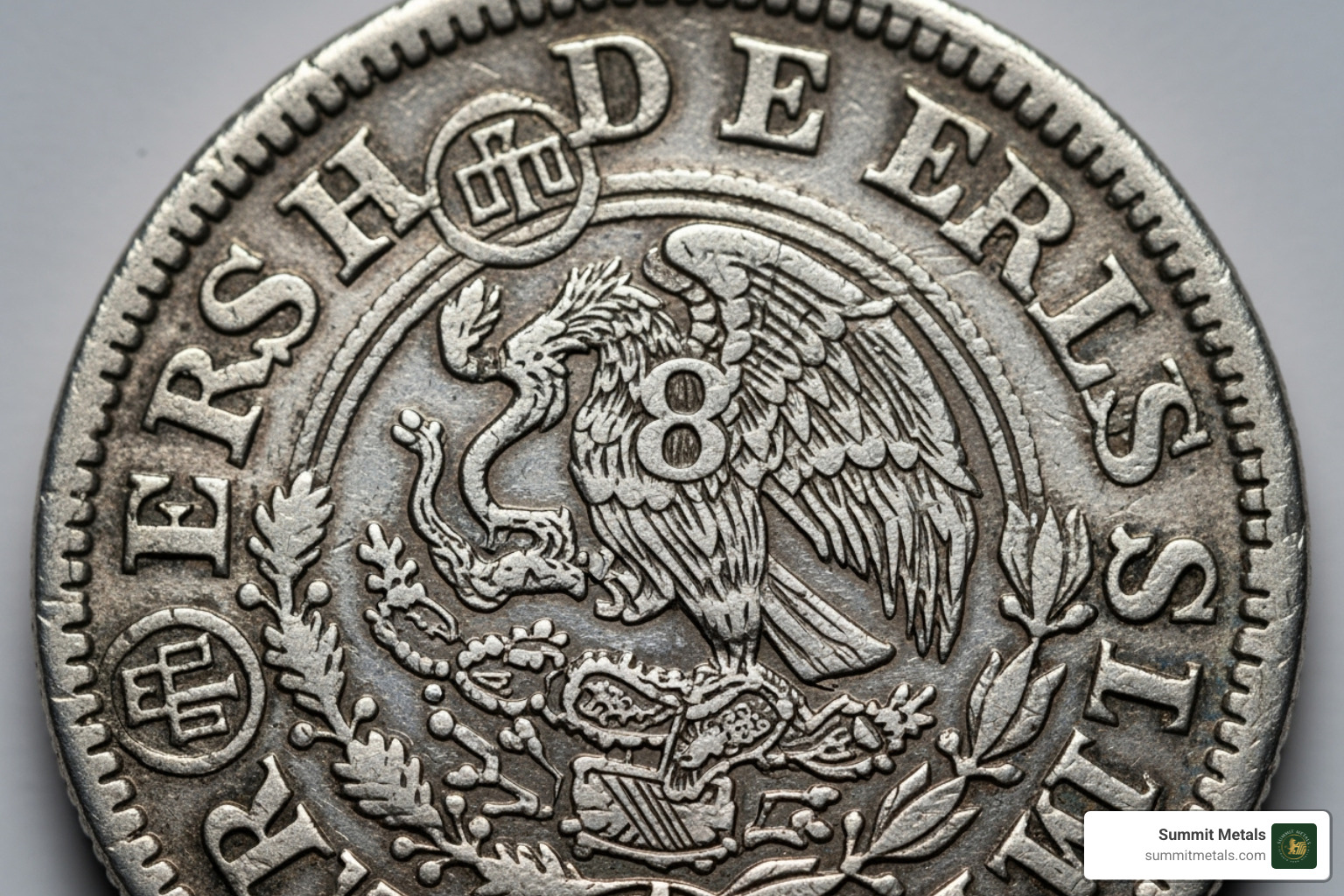
One of the most fascinating pieces of evidence for this global reach is something called "chop marks." These are small stamps that Asian merchants, bankers, and assayers punched into coins to verify their authenticity and silver content. A heavily chopmarked mexican silver dollar tells an amazing story – it traveled thousands of miles through countless hands, each stamp representing another person who trusted its silver value.
These marks might look like damage to modern eyes, but they're actually proof of the coin's incredible journey across vast trade networks. This widespread acceptance was what made early globalization possible, decades before the word "globalization" even existed.
Influence on the United States and Beyond
The mexican silver dollar shaped American money in ways that still affect us today. When the founding fathers sat down to create the U.S. dollar system, they didn't start from scratch – they copied what already worked.
The Coinage Act of 1792 based the new American dollar directly on the Spanish dollar standard. Early U.S. dollars contained 0.7735 troy ounces of silver, closely matching the trusted Mexican standard. In fact, mexican silver dollars remained legal tender in the United States until 1857, circulating right alongside early American coins.
Here's something that might surprise you: the dollar sign ($) itself likely comes from the Spanish American peso. Some historians believe it evolved from overlapping the letters "P" and "S," while others think it came from a "U" and "S" combination representing "United States" of the peso.
The influence didn't stop at America's borders. The mexican silver dollar became the foundation for currencies around the world, directly shaping the Canadian dollar, Chinese yuan, and Japanese yen. This wasn't just about copying a design – it was about adopting a proven standard that people already trusted.
Why the Mexican Silver Dollar Dominated 1930s Shanghai
Shanghai in the 1930s tells one of the most interesting stories about the mexican silver dollar's staying power. While local governments struggled with political chaos, these silver coins became the preferred currency in one of Asia's most important cities.
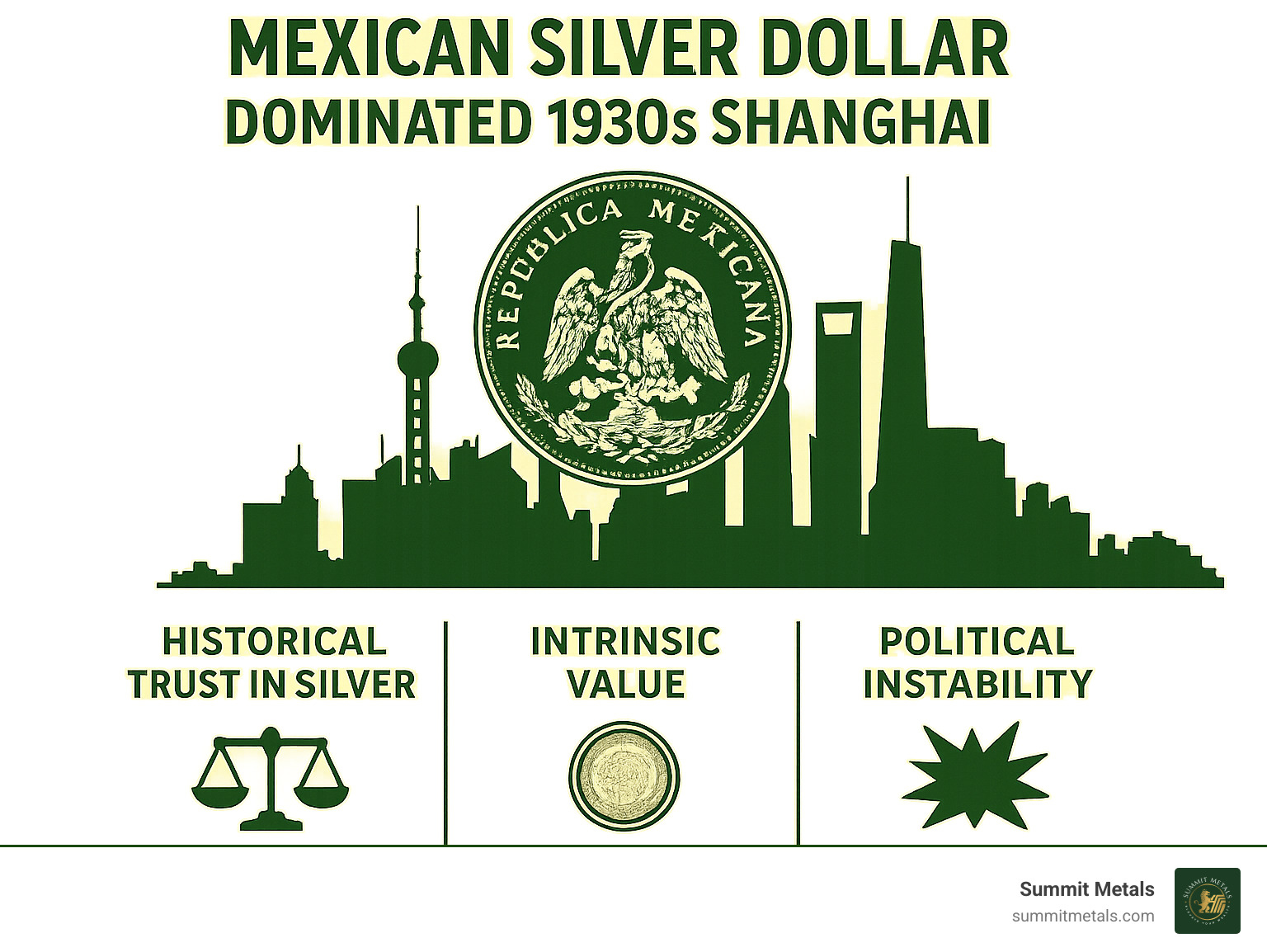
The reasons reveal a lot about human nature and money. Chinese merchants had historically valued silver by weight, but China lacked major domestic silver reserves. The massive silver mines of Mexico had been feeding Asian trade routes for centuries, creating deep familiarity with these coins.
More importantly, political instability during China's warlord era made government-backed currencies unreliable. Local currencies could be devalued overnight by whoever happened to be in power. The mexican silver dollar offered something different – its value came from the silver itself, not from political promises.
This created an interesting shift in how people thought about money. Instead of trusting government backing, Chinese traders began recognizing the intrinsic value of the silver content. When your local currency might be worthless tomorrow, a coin with real silver becomes incredibly attractive.
The mexican silver dollar's dominance in 1930s Shanghai proves a timeless principle: when uncertainty rises, people turn to assets with inherent value. It's a lesson that resonates strongly with modern precious metals investors who understand that physical silver provides stability that paper currencies simply can't match.
Collecting and Investing in Mexican Silver Coins Today
The legacy of the mexican silver dollar continues to captivate both collectors and investors in the modern era. These coins offer a unique blend of historical significance, artistic beauty, and tangible silver content, making them a valuable addition to any portfolio.
The Appeal for Collectors
For numismatists, Mexican silver coins offer a rich and diverse collecting experience. Whether it's the ancient feel of an 8 Reales coin, the classic "Cap and Rays" design, or the varied 20th-century Pesos, each coin holds a piece of history in your hand. Many vintage Pesos remain surprisingly affordable, offering an accessible entry point for new collectors. Their historical significance and artistic appeal make them more than just metal; they are tangible artifacts of a bygone era.
For those interested in modern coinage, the Mexican Silver Libertad offers a compelling collecting proposition. Its stunning Winged Victory design, coupled with traditionally low mintages (especially for proof coins and special finishes like antique or reverse proof), ensures its collectibility. Collecting physical coins with such a storied past adds a unique dimension in our increasingly digital world.
The Value for Investors
From an investment perspective, Mexican silver coins offer compelling benefits, primarily driven by their silver content. Modern Silver Libertads are pure bullion plays, containing .999 fine silver. As a top ten silver bullion coin, the Libertad provides a liquid and trusted way to invest in physical silver.
Historical silver Pesos, often referred to as "junk silver" or "Constitutional Silver" in other contexts, also offer a cost-effective way to acquire silver. While their numismatic value might be lower for common dates, their intrinsic silver content acts as a tangible hedge against inflation and economic uncertainties. These coins often trade at a low premium over the spot price of silver, making them an economical choice for stacking.
For those looking to diversify their investment portfolio with precious metals, Mexican silver coins are an excellent option. We at Summit Metals understand the nuances of precious metals pricing, including how Spot Price vs. Premium: How Precious Metals Pricing Works. Our transparent, real-time pricing and competitive rates, achieved through bulk purchasing, ensure trust and value for investors. Whether you're interested in high-purity Libertads for bullion investment or historical Pesos for their silver content and historical appeal, we can guide you. And naturally, protecting your investment is key, which is why we emphasize Top Storage for Silver: Best Practices for Safekeeping Your Investment.
Frequently Asked Questions about the Mexican Silver Dollar
What is a Mexican silver dollar actually called?
That's a great question, and it can be a little tricky! When most people talk about the "mexican silver dollar," they're usually referring to the famous 8 Reales coin. Think of it as the original, the granddaddy of them all. This coin was the direct descendant of the Spanish dollar, or "piece of eight," and it was minted in independent Mexico from 1824 all the way up to 1897. It was truly a global powerhouse.
But the story doesn't end there! After Mexico modernized its money system and went decimal, larger silver coins, particularly the Peso from 1898 to 1945, also earned the "silver dollar" nickname among collectors. They were big, beautiful silver coins that kept the legacy of circulating silver alive. Even some later commemorative issues fit into this category, thanks to their size and historical importance.
How much silver is in an old Mexican peso?
The amount of silver in an old Mexican Peso is a fascinating journey through time, really reflecting Mexico's economic ups and downs! The silver content changed quite a bit over the years due to market pressures and new laws.
Let's start with the big one: the 8 Reales coin, which was minted until 1897. These beauties contained about 24.4 grams of pure silver and were .903 fine. That's a lot of precious metal!
As the 20th century rolled in, things began to shift. The 1 Peso coin from 1920 to 1945 still had a good amount, with 12 grams of pure silver at .720 fine. But by 1957, the silver content in the 1 Peso coin saw a pretty dramatic drop, down to just 1.6 grams and only 10% silver.
Later on, Mexico did issue some larger silver Pesos again, like the 1977-1979 100 Pesos, which had a more substantial 0.643 troy ounces of silver. So, as you can see, "old" means different things for different coins when it comes to their silver content!
Are Mexican silver coins a good investment?
Absolutely! Mexican silver coins can be a fantastic addition to your investment portfolio, and for a couple of key reasons. First, they offer the solid security of silver bullion content, which acts as a great hedge against inflation and is a tangible asset you can hold. Second, many of them carry significant numismatic value for collectors, adding another layer of appeal.
Let's talk about the modern stars: Mexican Silver Libertads. These are incredibly popular bullion coins, celebrated for their stunning .999 fine silver purity and their beautiful artistic design. Whether you're an investor looking for pure silver or a collector admiring the craftsmanship, Libertads check all the boxes.
Then there are the historical Pesos. Especially those from the early 20th century, these are often considered "Constitutional Silver" or "Junk Silver" (a term that simply means they were once circulating coinage with precious metal content). They offer a more affordable way to get your hands on physical silver, making them a smart choice for those looking to acquire tangible assets without breaking the bank.
Whether a Mexican silver coin is the "best" investment for you really boils down to your personal goals. Are you focused purely on the silver content for bullion? Or are you drawn to the fascinating blend of intrinsic value and rich historical appeal? Either way, these coins offer a compelling opportunity!
Conclusion
The journey of the mexican silver dollar is truly incredible! It’s a captivating story of power, stunning artistry, and lasting value. Imagine, this coin started in Mexico's rich colonial silver mines, then became the world's very first global currency. Today, it shines as the beloved Silver Libertad. Its legacy is everywhere, even in the money symbols we use and our deep trust in real, tangible assets.
This isn't just about old coins; it's a living piece of history that shaped how the world does business. It truly is a cultural icon, evolving from a powerhouse currency to a smart modern investment.
So, whether you're a historian fascinated by its long journey, a collector looking for a tangible link to a rich past, or an investor seeking a solid asset for the future, the mexican silver dollar offers something special. Its inherent silver value, combined with its profound historical significance, makes it a unique and valuable addition to any portfolio.
Ready to add authenticated precious metals to your own portfolio? At Summit Metals, we're here to help. We provide transparent pricing and trusted service, always putting your financial well-being first. Based right here in Wyoming, USA, with locations in Wyoming, Utah, and serving clients worldwide, we pride ourselves on competitive rates thanks to our bulk purchasing. Explore our collection of historic and modern silver coins today. Prices shown are at the time of this publication.
